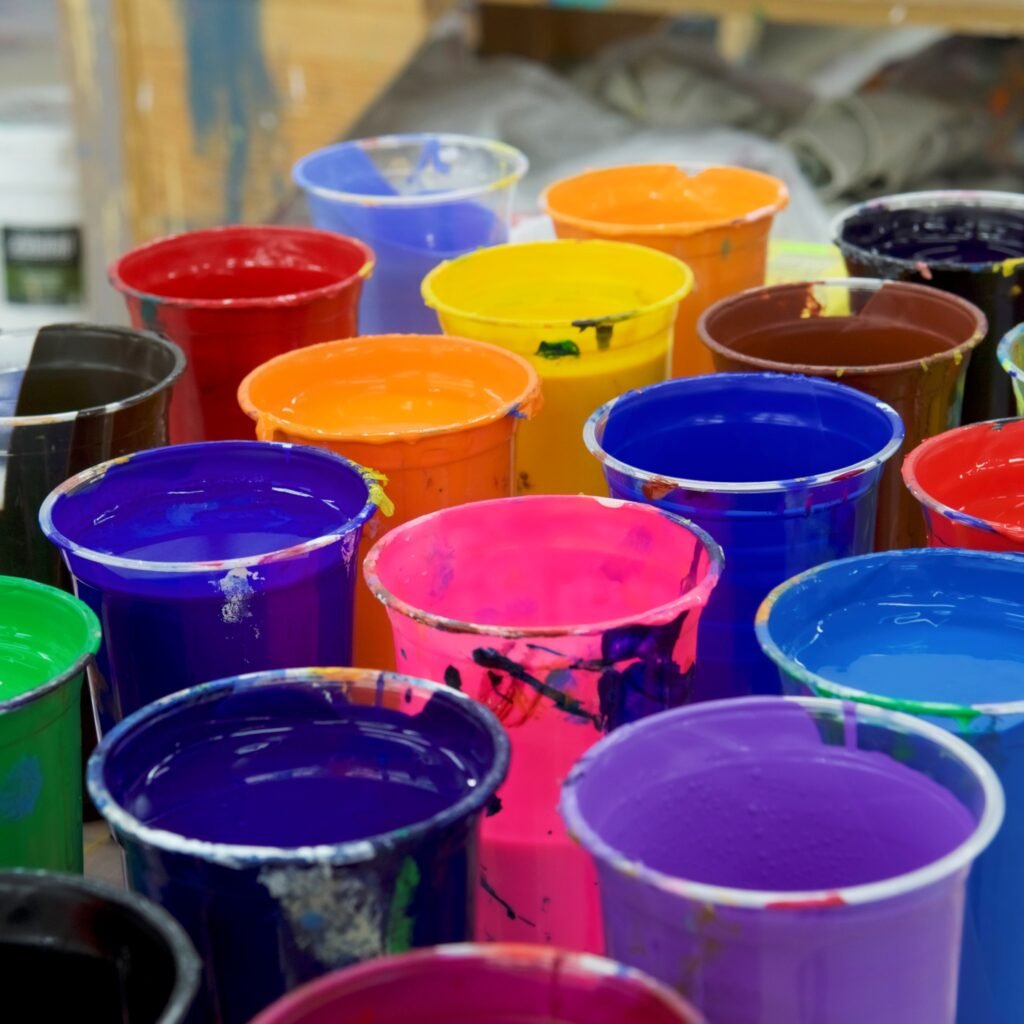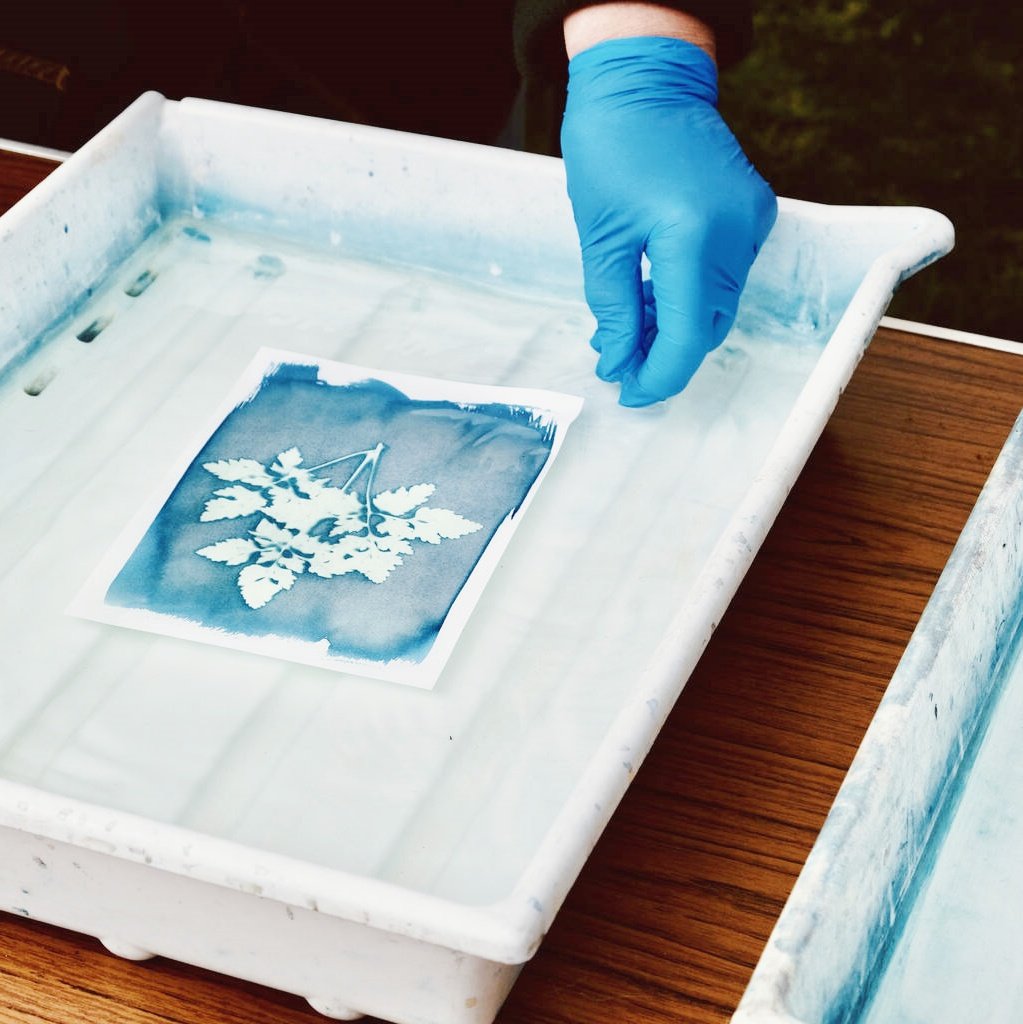Trong quy trình in mực plastisol, việc vệ sinh mực và các thiết bị liên quan là một bước vô cùng quan trọng. Tuy nhiên, nhiều nhà in thường mắc phải một số sai lầm khi vệ sinh mực plastisol, không chỉ làm giảm chất lượng in mà còn dẫn đến hư hỏng thiết bị và tăng chi phí. Bài viết này sẽ đi sâu phân tích những sai lầm thường gặp trong quá trình vệ sinh mực plastisol và đưa ra một số lời khuyên thiết thực giúp bạn tránh những sai lầm này.
I. Bỏ qua tần suất vệ sinh
Nhiều nhà in thường bỏ qua tầm quan trọng của việc vệ sinh thiết bị phun mực plastisol thường xuyên. Việc không vệ sinh trong thời gian dài có thể dẫn đến tích tụ cặn mực, đặc biệt là trên đầu in và lưới in, tạo thành các lớp cứng khó loại bỏ. Điều này không chỉ làm tắc nghẽn lưới in (mực plastisol bị tắc), ảnh hưởng đến việc phân phối mực đều mà còn làm giảm độ trong suốt của vật liệu in. Do đó, việc thiết lập và thực hiện tần suất vệ sinh hợp lý là rất quan trọng.
Sai lầm: Không vệ sinh sạch sẽ dẫn đến tích tụ cặn mực.
Khuyên bảo: Lập lịch vệ sinh dựa trên tần suất sử dụng và loại mực, và tuân thủ nghiêm ngặt.
II. Sử dụng chất tẩy rửa không phù hợp
Chọn đúng chất tẩy rửa là chìa khóa để làm sạch mực plastisol. Một số máy in có thể chọn chất tẩy rửa giá rẻ nhưng không hiệu quả, hoặc thậm chí sử dụng nước hoặc các dung môi không phù hợp khác để giảm chi phí. Điều này không chỉ không loại bỏ hiệu quả cặn mực mà còn có thể làm hỏng bề mặt thiết bị, dẫn đến chi phí sửa chữa tăng cao.
Sai lầm: Sử dụng chất tẩy rửa không phù hợp, chẳng hạn như nước sạch hoặc dung môi kém chất lượng.
Khuyên bảo: Chọn chất tẩy rửa được thiết kế riêng cho mực plastisol và làm theo hướng dẫn vệ sinh của nhà sản xuất.
III. Phương pháp vệ sinh không đúng cách
Phương pháp vệ sinh đúng cách là điều cần thiết để đảm bảo hiệu quả vệ sinh. Một số máy in có thể áp dụng các phương pháp vệ sinh quá mạnh, chẳng hạn như sử dụng bàn chải cứng hoặc dụng cụ kim loại để chà đầu in và lưới in, điều này có thể làm mòn bề mặt thiết bị hoặc thậm chí gây hư hỏng. Mặt khác, nếu vệ sinh không đủ kỹ, cặn mực vẫn còn sót lại, ảnh hưởng đến chất lượng in.
Sai lầm: Sử dụng bàn chải cứng hoặc dụng cụ bằng kim loại để chà rửa hoặc không vệ sinh kỹ lưỡng.
Khuyên bảo:Sử dụng vải mềm hoặc miếng bọt biển, kết hợp với chất tẩy rửa phù hợp để vệ sinh thiết bị nhẹ nhàng nhưng kỹ lưỡng.
IV. Bỏ bê việc bảo vệ cá nhân
Khi vệ sinh mực plastisol, thợ in thường bỏ qua tầm quan trọng của việc bảo hộ cá nhân. Chất tẩy rửa mực có thể chứa hóa chất độc hại, và việc tiếp xúc hoặc hít phải những chất này trong thời gian dài có thể gây nguy hiểm cho sức khỏe.
Sai lầm: Không đeo thiết bị bảo hộ cá nhân như găng tay, khẩu trang và kính bảo hộ.
Khuyên bảo: Luôn đeo thiết bị bảo hộ cá nhân phù hợp trong quá trình vệ sinh.
V. Không xác minh hiệu quả làm sạch
Việc kiểm tra hiệu quả vệ sinh sau khi vệ sinh cũng quan trọng không kém. Một số máy in có thể bỏ qua bước này, dẫn đến việc vệ sinh không hoàn toàn hoặc tiềm ẩn nhiều vấn đề. Bằng cách kiểm tra độ sạch của đầu in và lưới in, bạn có thể đảm bảo thiết bị đang hoạt động ở trạng thái tối ưu.
Sai lầm: Không kiểm tra sau khi vệ sinh và tiến hành sản xuất trực tiếp.
Khuyên bảo: Sau khi vệ sinh, hãy dùng vải sạch hoặc khăn giấy để kiểm tra bề mặt thiết bị nhằm đảm bảo không còn cặn mực.
VI. Pha trộn các loại mực và chất tẩy rửa khác nhau
Các loại mực plastisol khác nhau (như mực plastisol thông thường và mực plastisol crom) có thể cần các chất tẩy rửa khác nhau. Việc trộn lẫn các loại mực và chất tẩy rửa khác nhau có thể dẫn đến phản ứng hóa học, tạo ra các chất độc hại hoặc thậm chí làm hỏng thiết bị.
Sai lầm: Trộn các loại mực và chất tẩy rửa khác nhau.
Khuyên bảo: Luôn chọn chất tẩy rửa phù hợp dựa trên loại mực và làm theo hướng dẫn vệ sinh của nhà sản xuất.
VII. Mực pha quá loãng
Mặc dù mực pha loãng có thể điều chỉnh độ nhớt, nhưng pha quá loãng có thể làm giảm hiệu suất của mực, chẳng hạn như màu nhạt hơn và độ bám dính kém hơn. Một số máy in có thể chọn sử dụng chất pha loãng giá rẻ để tiết kiệm chi phí, điều này có thể ảnh hưởng đến chất lượng in và có khả năng làm hỏng thiết bị.
Sai lầm: Pha mực quá loãng hoặc sử dụng chất pha loãng rẻ tiền.
Khuyên bảo: Sử dụng lượng dung môi chất lượng cao phù hợp dựa trên loại mực và yêu cầu sản xuất.
VIII. Bỏ bê việc bảo trì thiết bị
Việc bảo trì thiết bị thường xuyên là rất quan trọng để kéo dài tuổi thọ và duy trì điều kiện hoạt động tối ưu. Một số máy in có thể bỏ qua việc bảo trì thiết bị, dẫn đến hiệu suất giảm sút hoặc thậm chí hỏng hóc.
Sai lầm: Bỏ bê việc bảo trì thiết bị, chẳng hạn như thay thế các bộ phận bị mòn, kiểm tra cáp nguồn và kết nối, v.v.
Khuyên bảo: Xây dựng và thực hiện kế hoạch bảo trì thiết bị, bao gồm kiểm tra thường xuyên, vệ sinh và thay thế các bộ phận bị mòn.
Phần kết luận
Việc tránh những sai lầm thường gặp trong quá trình vệ sinh mực plastisol là rất quan trọng để đảm bảo chất lượng in và tuổi thọ thiết bị. Bằng cách thiết lập và thực hiện kế hoạch vệ sinh hợp lý, lựa chọn chất tẩy rửa và phương pháp vệ sinh phù hợp, sử dụng thiết bị bảo hộ cá nhân, kiểm tra hiệu quả vệ sinh và bảo trì thiết bị, bạn có thể tránh được những sai lầm này một cách hiệu quả và cải thiện hiệu suất cũng như chất lượng in ấn.


